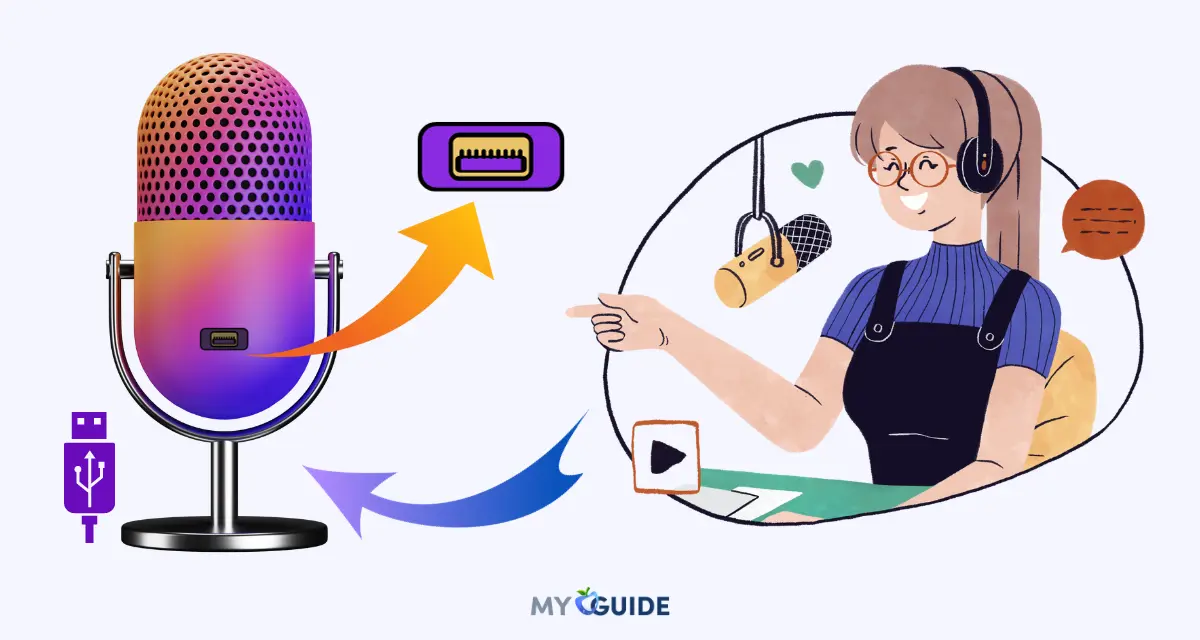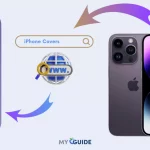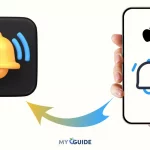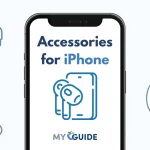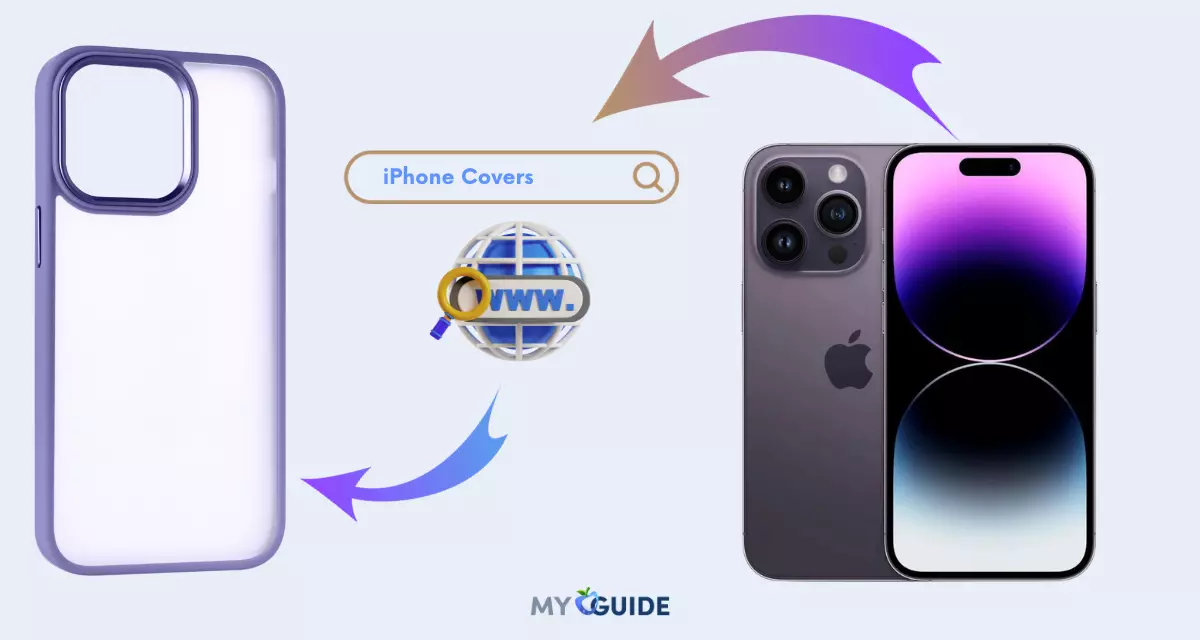In the field of podcasting, having the right equipment can make all the difference in the quality and success of your show. Regarding audio quality, one piece of equipment stands out above the rest: the USB microphone. With technological advancements and innovations constantly emerging, 2025 is shaping up to be an exciting year for podcasters in search of the perfect USB microphone.
In this comprehensive guide, we will understand the best USB microphones available for podcasting in 2025, ensuring that your voice is crystal clear and your message is heard by a wider audience.
Key Factors to Consider When Choosing a USB Microphone for Podcasting in 2025
When selecting a USB microphone for podcasting, several crucial factors should influence your decision. These considerations ensure that you choose a microphone that suits your specific needs and delivers the best possible audio quality. Here are the key factors to keep in mind:
Sound Quality and Sensitivity
- Sound quality is paramount when it comes to podcasting. You want your voice to be clear, natural, and free from unwanted noise.
- Look for a microphone with a wide frequency response range, as it will capture a broader spectrum of sound, including deep bass and crisp treble.
- Sensitivity refers to how well the microphone picks up sound. A microphone with good sensitivity captures subtle nuances in your voice.
Polar Patterns
- Polar patterns define how a microphone picks up sound from different directions. The choice of polar pattern depends on your recording environment and the type of podcast you’re creating.
- Cardioid: Ideal for solo podcasters, it captures sound from the front while minimizing noise from the sides and rear.
- Omnidirectional: Suitable for roundtable discussions or multiple speakers, it captures sound from all directions.
- Bidirectional: Great for interviews with two people facing each other, as it records from the front and rear but rejects side noise.
Connectivity and Compatibility
- USB microphones are known for their plug-and-play simplicity, but it’s essential to ensure compatibility with your recording setup.
- Most USB microphones work with both Windows and Mac computers without requiring extra drivers.
- Check if the microphone is compatible with your preferred recording software, such as Audacity, Adobe Audition, or GarageBand.
- Some USB microphones have additional features, like headphone jacks for real-time monitoring, which can be valuable for podcasting.
Budget Considerations
- Your budget is a critical factor in choosing a USB microphone. There are options available for various price ranges, so it’s essential to strike a balance between your needs and your budget.
- Entry-level USB microphones offer decent quality for beginners and those on a tight budget.
- Mid-range microphones provide improved sound quality, more features, and better build quality.
- High-end USB microphones offer professional-grade audio quality and advanced features, suitable for experienced podcasters or content creators.
Before we go into the specifics of each USB microphone, it’s important to understand the criteria we used to evaluate and select the best options for podcasting in 2025. Our rigorous process considered factors such as audio quality, ease of use, versatility, price, and overall performance. We’ve narrowed our choices to top contenders who excel in these areas.
List of Best USB Microphones for Podcasting in 2025
Blue Yeti X Pro
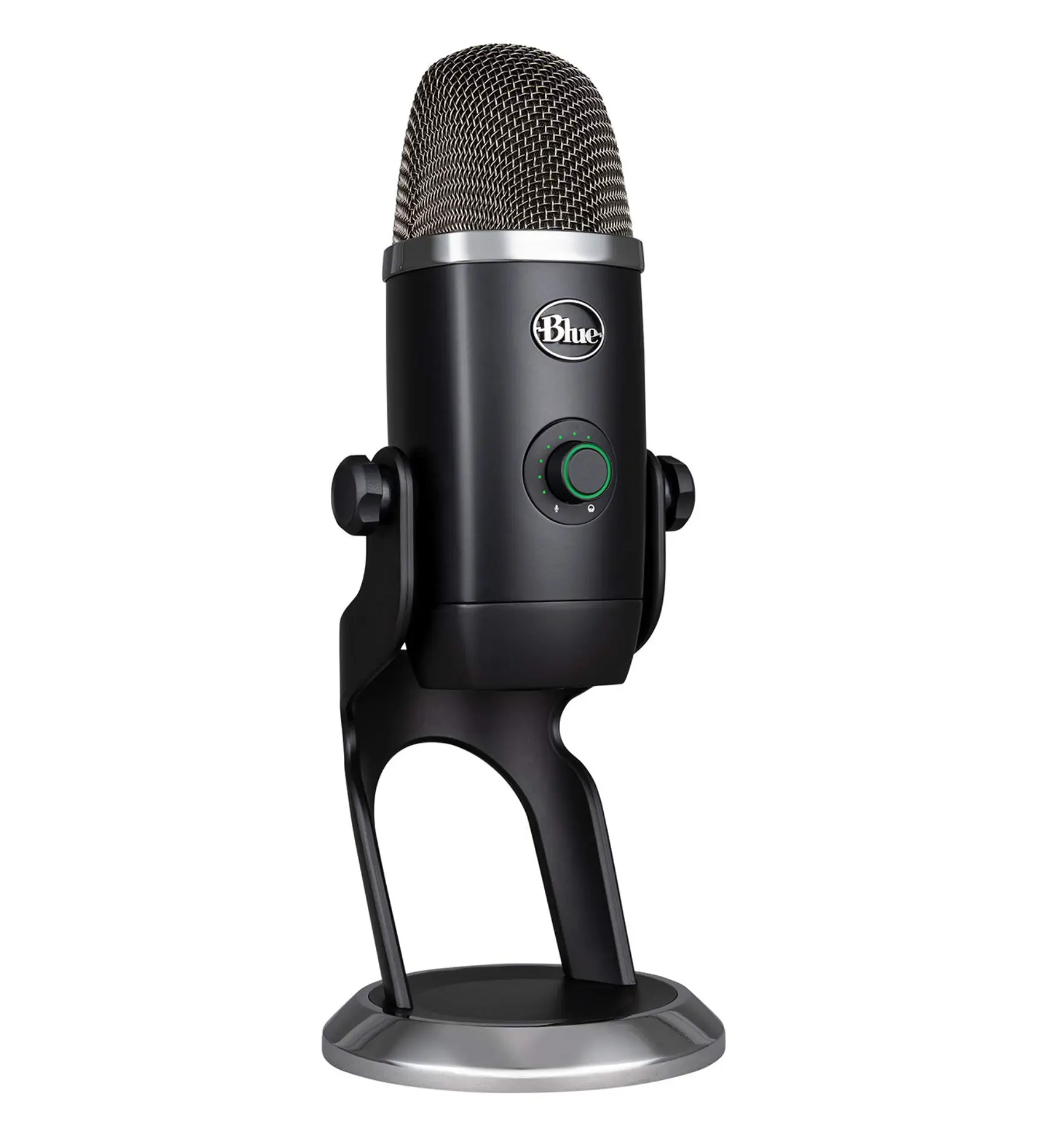
The Blue Yeti X Pro is renowned for its exceptional audio quality. It boasts a 24-bit depth and a 192kHz sample rate, ensuring that your podcast sounds crisp, clear, and professional. Whether you’re recording interviews, solo episodes, or group discussions, this microphone captures every nuance.
Versatility is key for podcasters, and the Blue Yeti X Pro delivers. It features four different pickup patterns, including cardioid, bidirectional, omnidirectional, and stereo, making it suitable for a wide range of recording scenarios. Additionally, the microphone’s built-in gain control allows for precise adjustments to match your specific needs.
Price: Despite its premium features, the Blue Yeti X Pro remains affordable, making it an excellent choice for both beginner and experienced podcasters.
Pros and Cons
The Blue Yeti X Pro is a content creator, live streamer, and a podcasters choice
Pros:
- Sound Quality: Blue microphones are known for their excellent sound quality, providing clear and crisp audio recordings for various purposes, such as podcasting, streaming, and voiceovers.
- Versatility: Blue Yeti microphones are versatile and suitable for a wide range of applications. They often feature multiple recording patterns (e.g., cardioid, bidirectional, omnidirectional, and stereo), making them adaptable for different recording scenarios.
- Plug-and-Play: These microphones are USB-based, which means they are easy to set up and use. You can typically plug them into your computer, and they work without the need for additional audio interfaces or drivers.
- Build Quality: Blue microphones are known for their solid build quality and durable construction, which can contribute to a longer lifespan.
- Customization: Some Blue Yeti models come with built-in features like gain control, headphone monitoring, and mute buttons, allowing you to customize your recording experience.
Cons:
- Price: Blue Yeti microphones, especially higher-end models, can be relatively expensive compared to other USB microphones on the market.
- Size and Weight: These microphones tend to be bulky and heavy, which may not be suitable for users looking for a more portable option.
- Background Noise: Due to their sensitivity, Blue Yeti microphones can pick up background noise if not used in a well-treated recording environment. This can be a drawback for users in noisy settings.
Pricing
The price of the Blue Yeti X Pro is around ₹23,480, if want to buy a Blue Yeti X Pro microphone Click the link below.
Rode NT-USB Mini
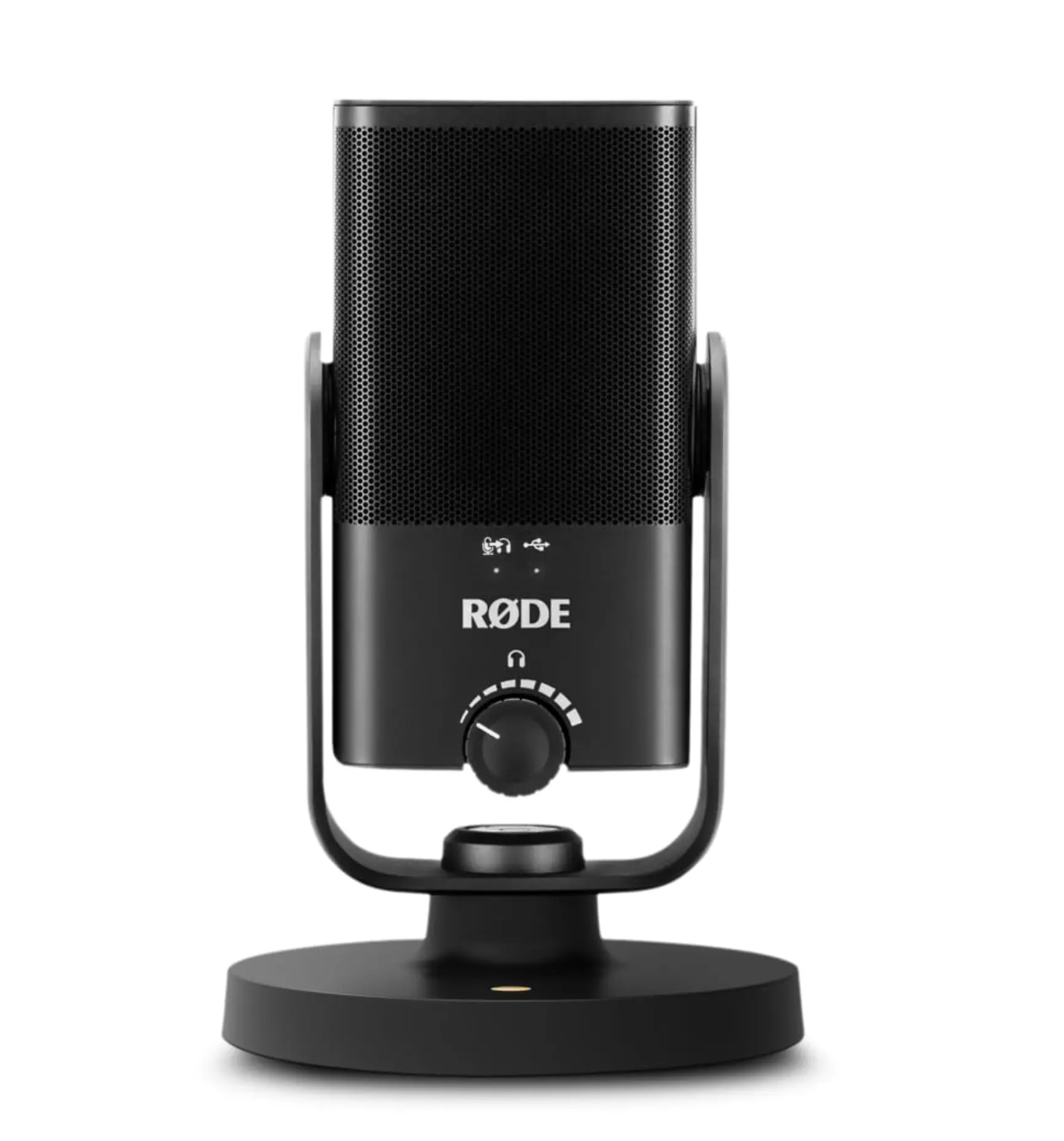
The Rode NT-USB Mini is compact but packs a punch in terms of audio quality. With a studio-grade condenser capsule, it captures your voice with warmth and clarity. This microphone ensures that your podcast maintains a professional sound without breaking the bank.
Setting up the Rode NT-USB Mini is a breeze. It connects seamlessly to your computer via USB, and its minimalist design means you can start recording quickly. No need for complex configurations or additional equipment.
If you’re an on-the-go podcaster, the Rode NT-USB Mini is your perfect companion. Its compact size and sturdy build make it easy to transport, ensuring that you can record high-quality content wherever you are.
Pros and Cons
The Rode NT-USB Mini is a popular microphone for various recording and streaming applications. Here are some of its pros and cons:
Pros:
- Excellent Sound Quality: The Rode NT-USB Mini delivers clear and crisp audio quality, making it suitable for a wide range of recording applications, including podcasting, voiceovers, and streaming.
- Compact and Portable: Its compact and lightweight design makes it easy to transport and set up, making it a great choice for creators who are always on the go.
- Plug-and-Play: The microphone is USB-powered and requires no additional drivers or external audio interfaces. It’s very easy to set up and use, making it beginner-friendly.
- Directional Polar Pattern: The cardioid polar pattern helps reduce background noise and focus on the sound source in front of the microphone, resulting in better audio quality.
- Integrated Pop Filter: It comes with an integrated pop filter that helps reduce plosive sounds (e.g., “p” and “b” sounds) and minimizes the need for additional accessories.
Cons:
- No Gain Control: Unlike some other USB microphones, the Rode NT-USB Mini lacks a gain control knob. Users have to adjust the input level through their computer’s settings, which can be less convenient.
- Limited Polar Patterns: While the cardioid pattern is suitable for many applications, it may not be the best choice for all recording scenarios. Some microphones offer switchable polar patterns for more versatility.
- No Shock Mount or Desktop Stand: It doesn’t come with a shock mount or a desktop stand, which means you may need to purchase these separately for optimal mounting and isolation.
Pricing
The price of the Rode NT-USB Mini is ₹10,499, if want to buy a Rode NT-USB Mini microphone Click the link below.
Audio-Technica AT2020USB Plus
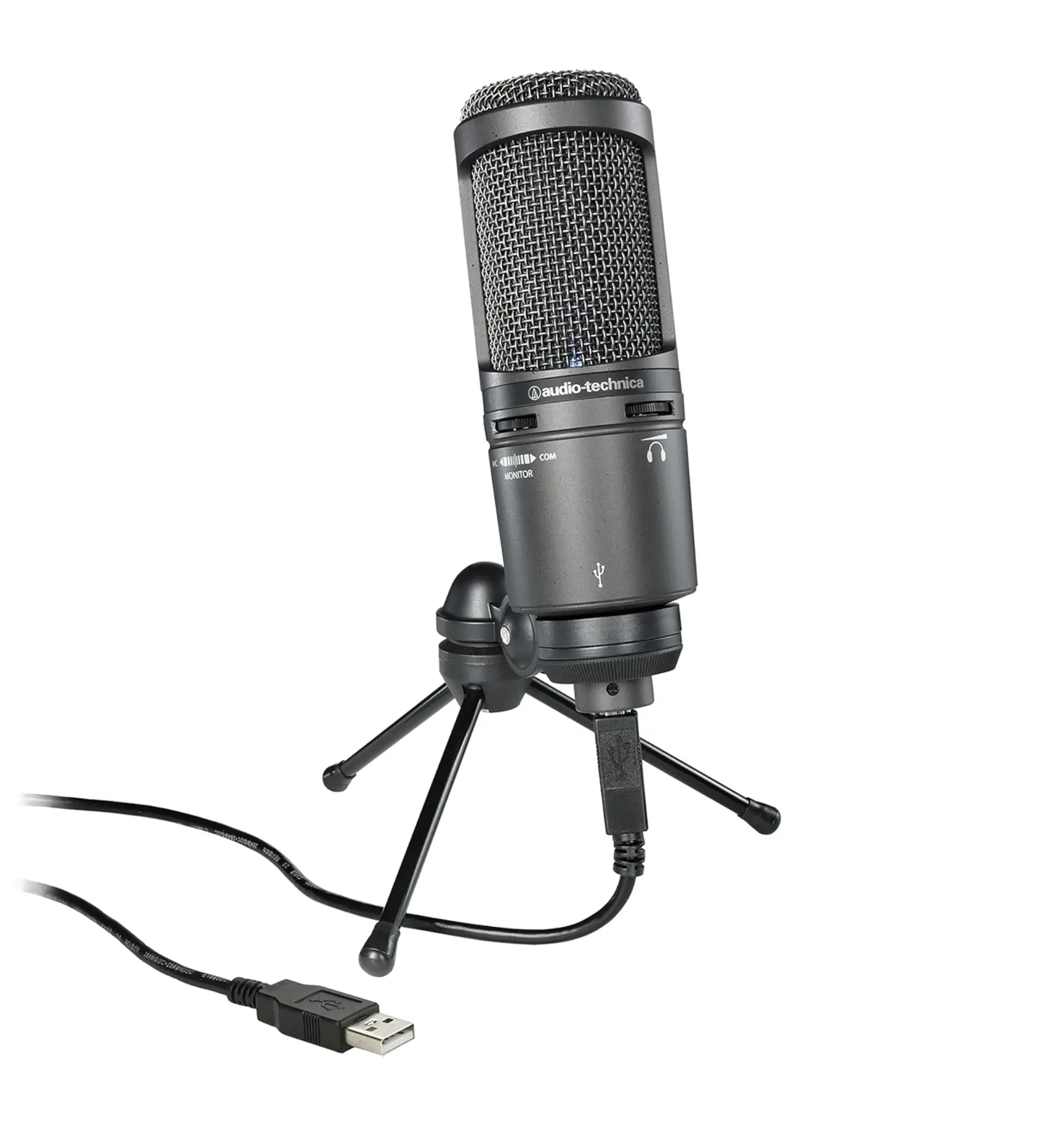
The Audio-Technica AT2020USB+ is known for its studio-quality audio reproduction. With a wide frequency response and a high SPL handling capability, it captures every detail of your voice. Your listeners will appreciate the professional-grade sound.
This microphone is built to last. Its rugged construction ensures that it can withstand the demands of regular podcasting, whether you’re recording in a studio or on the road. You can rely on the AT2020USB+ for years to come.
It’s compatible with both Windows and Mac operating systems, making it a versatile choice for podcasters using various platforms.
Pros and Cons
The Audio-Technica AT2020USB Plus microphone is a popular choice among content creators, podcasters, and musicians for its USB connectivity and audio quality. Here are some of the pros and cons of this microphone:
Pros:
- Plug-and-Play: One of the biggest advantages of the AT2020USB Plus is its plug-and-play functionality. You can simply connect it to your computer’s USB port, and it’s ready to use without the need for additional drivers or a complicated setup.
- Excellent Audio Quality: This microphone is known for its clear and crisp audio reproduction. It captures vocals and instruments with great accuracy, making it suitable for a wide range of recording applications.
- Cardioid Polar Pattern: The cardioid pickup pattern helps reduce background noise and focuses on the sound source directly in front of the microphone. This is ideal for recording in environments with ambient noise.
- Built-In Headphone Jack: The microphone has a built-in headphone jack with volume control, allowing for real-time monitoring of your audio. This feature is valuable for live streaming, podcasting, and recording sessions.
- Solid Build Quality: The AT2020USB Plus is built with durability in mind. Its all-metal construction ensures that it can withstand the rigors of regular use.
Cons:
- Sensitivity to Handling Noise: Like many condenser microphones, the AT2020USB Plus can be sensitive to handling noise and vibrations. To mitigate this, it’s important to use a shock mount or a stable microphone stand.
- Price Point: While it’s not overly expensive, there are other USB microphones on the market that offer similar or better features at a similar price point. Depending on your needs and preferences, you may find better value elsewhere.
- Pop Filter Not Included: To reduce plosive sounds like “p” and “b” sounds, you may need to purchase a pop filter separately, as it is not included with the microphone.
Pricing
The price of the Audio-Technica AT2020USB Plus microphone is ₹16,959, if want to buy an Audio-Technica AT2020USB Plus microphone Click the link below.
Shure MV7
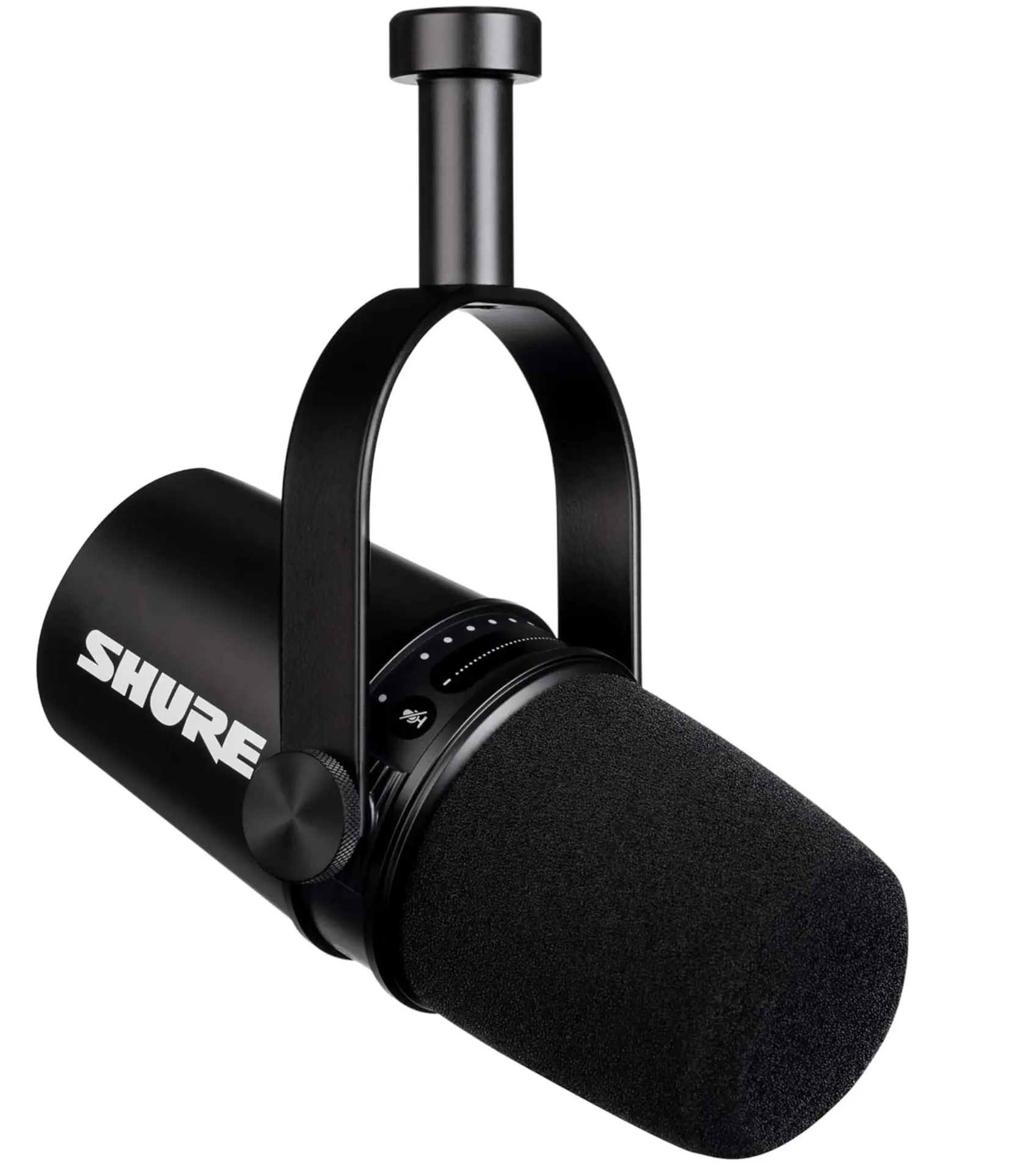
The Shure MV7 is a dynamic microphone that provides exceptional audio quality. It features a hybrid XLR/USB design, allowing you to choose your preferred connection method. This flexibility is perfect for podcasters who may want to upgrade their setup in the future.
With the ShurePlus™ MOTIV app, you can fine-tune your audio settings to achieve the perfect sound for your podcast. Whether you prefer a warm, rich tone or a crisp, clear voice, this microphone can adapt to your preferences.
Shure is known for its robust and reliable microphones, and the MV7 is no exception. It’s built to withstand years of use, making it a wise investment for serious podcasters.
Pros and Cons
The Shure MV7 is a popular microphone, known for its versatility and high-quality audio recording capabilities. Like any product, it has its pros and cons, which can vary depending on your specific needs and preferences. Here are some of the pros and cons of the Shure MV7 microphone
Pros:
- Versatile Usage: The Shure MV7 is a dynamic microphone that can be used for a wide range of applications, including podcasting, streaming, voiceovers, and music recording. It’s suitable for both beginners and professionals.
- Excellent Sound Quality: The MV7 offers crisp and clear audio quality, with a frequency response tailored for speech and vocals. It can capture the nuances of your voice with great detail.
- Built-in Headphone Monitoring: The microphone has a headphone monitoring port, allowing you to listen to your audio in real time without latency. This feature is especially useful for podcasters and streamers who need to monitor their audio while recording.
- USB and XLR Connectivity: The MV7 offers both USB and XLR connectivity options. This versatility allows you to connect it directly to your computer via USB or use it with an audio interface via XLR, providing flexibility for different setups.
- Touch Panel Control: It has an intuitive touch panel on the microphone itself, allowing you to adjust settings such as gain, headphone volume, and mute with ease.
Cons:
- Price: Compared to some other USB microphones on the market, the Shure MV7 is relatively expensive. Its quality justifies the cost for many users, but it might be a drawback for those on a tight budget.
- Size and Weight: Some users may find the MV7 to be bulkier and heavier compared to other USB microphones. This could be a minor inconvenience if you plan to mount it on a boom arm or travel with it frequently.
- Requires Additional Accessories: To take full advantage of the MV7’s capabilities, you might need additional accessories such as a pop filter or shock mount, which can add to the overall cost.
Pricing
The price of the Shure MV7 microphone is ₹25,999, if want to buy the Shure MV7 microphone Click the link below.
Audio-Technica ATR2100x-USB
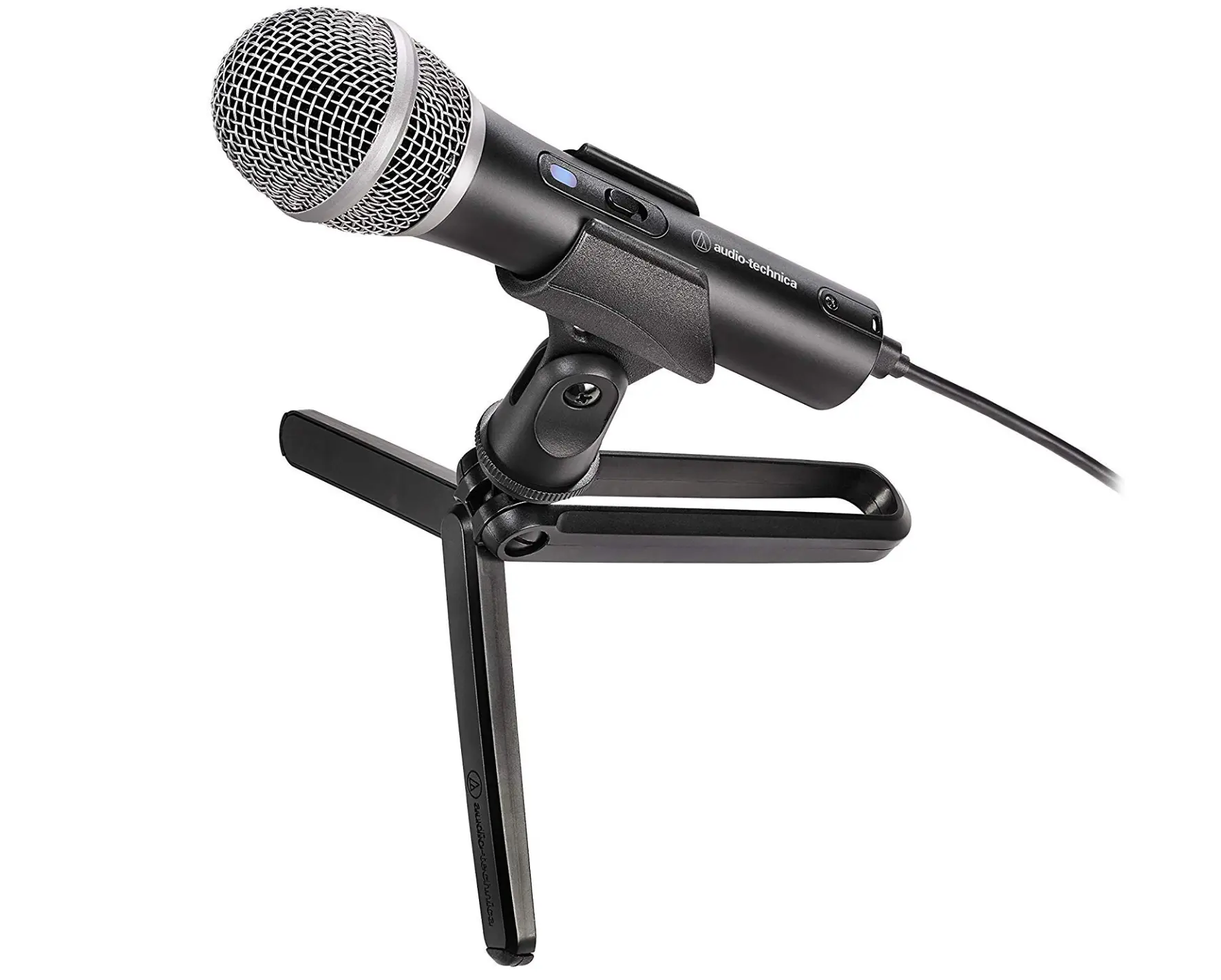
The Audio-Technica ATR2100x-USB is a versatile microphone known for its outstanding audio quality. It features both USB and XLR outputs, giving you the flexibility to connect to a variety of devices. With its dynamic capsule and cardioid polar pattern, it excels at reducing background noise and capturing your voice with clarity.
Whether you’re recording in a home studio, on the go, or in a noisy environment, this microphone shines. It also includes a headphone jack for real-time monitoring, ensuring that your audio is on point.
The ATR2100x-USB offers premium sound quality at an affordable price, making it an excellent choice for podcasters on a budget.
Pros and Cons
Pros:
- compatible with a wide range of devices. You can use it with computers, audio interfaces, and even mobile devices.
- Sound Quality: The ATR2100x-USB offers good audio quality, especially for its price point. It captures clear and crisp sound, making it suitable for various recording purposes, such as podcasts, voiceovers, and music.
- Cardioid Polar Pattern: It features a cardioid pickup pattern, which helps in isolating the sound source and reducing background noise. This is useful for recording in less-than-ideal acoustic environments.
- Built-In Headphone Jack: The microphone has a headphone jack that allows for real-time monitoring of your audio. This feature is especially helpful for podcasters and live streamers who need to hear themselves while recording.
- Durable Build: The ATR2100x-USB is built with durability in mind. It features a sturdy metal construction that can withstand the rigors of regular use and transportation.
Cons:
- Limited Frequency Response: While it provides decent sound quality, the microphone’s frequency response may not be as expansive as more high-end microphones. This limitation may affect its performance for certain professional audio applications.
- No Shock Mount Included: Unlike some other microphones in its price range, the ATR2100x-USB does not come with a shock mount. This accessory can be useful for reducing vibrations and handling noise.
- No On-Mic Gain Control: The microphone lacks onboard gain control, so you’ll need to adjust the input gain in your recording software or audio interface. This can be less convenient for quick adjustments.
Pricing
The price of the ATR2100x-USB microphone is ₹7,990, if want to buy the ATR2100x-USB microphone Click the link below.
Blue Yeti Nano

If you’re a fan of Blue microphones but need a more compact option, the Blue Yeti Nano is worth considering. Despite its small size, it delivers impressive audio quality with a 24-bit depth and a 48kHz sample rate. The cardioid pickup pattern focuses on your voice while minimizing background noise.
Its small and lightweight design makes it easy to carry with you wherever your podcasting adventures take you. Whether you’re recording interviews, vlogs, or voiceovers, the Yeti Nano is a reliable companion.
Setting up the Yeti Nano is effortless. Simply connect it to your computer’s USB port, and you’re ready to start recording. No additional drivers or complex configurations are necessary.
Pros and Cons
The Blue Yeti Nano is a popular USB microphone that is known for its compact size and solid audio quality. Here are some pros and cons of the Blue Yeti Nano microphone:
Pros:
- Good Audio Quality: The Blue Yeti Nano delivers clear and crisp audio recordings, making it suitable for various applications like podcasting, streaming, voiceovers, and more.
- USB Connectivity: It’s a plug-and-play microphone, which means it’s easy to set up and use. You don’t need any additional audio interfaces or complicated software installations.
- Compact and Portable: The Nano’s smaller size makes it highly portable. You can easily take it with you when traveling or recording on the go.
- Multiple Pickup Patterns: The microphone offers two selectable pickup patterns – cardioid and omnidirectional. This versatility allows you to use it for solo recordings or group discussions.
- Zero-Latency Monitoring: It has a 3.5mm headphone jack for real-time monitoring of your audio without any delay, which is crucial for tasks like podcasting and live streaming.
Cons:
- Limited Features: Compared to its bigger sibling, the Blue Yeti, the Nano has fewer features. It lacks some advanced options like adjustable gain control and additional pickup patterns.
- Sensitive to Background Noise: While it delivers good audio quality, it can be sensitive to background noise in the cardioid mode. This may require you to have a quiet recording environment.
- No XLR Connection: The Blue Yeti Nano uses a USB connection, which is convenient but may not be suitable for those who want the option to use an XLR connection with an audio interface.
Pricing
The price of the Blue Yeti Nano microphone is ₹8,994, if want to buy the Blue Yeti Nano microphone Click the link below.
Samson Q2U
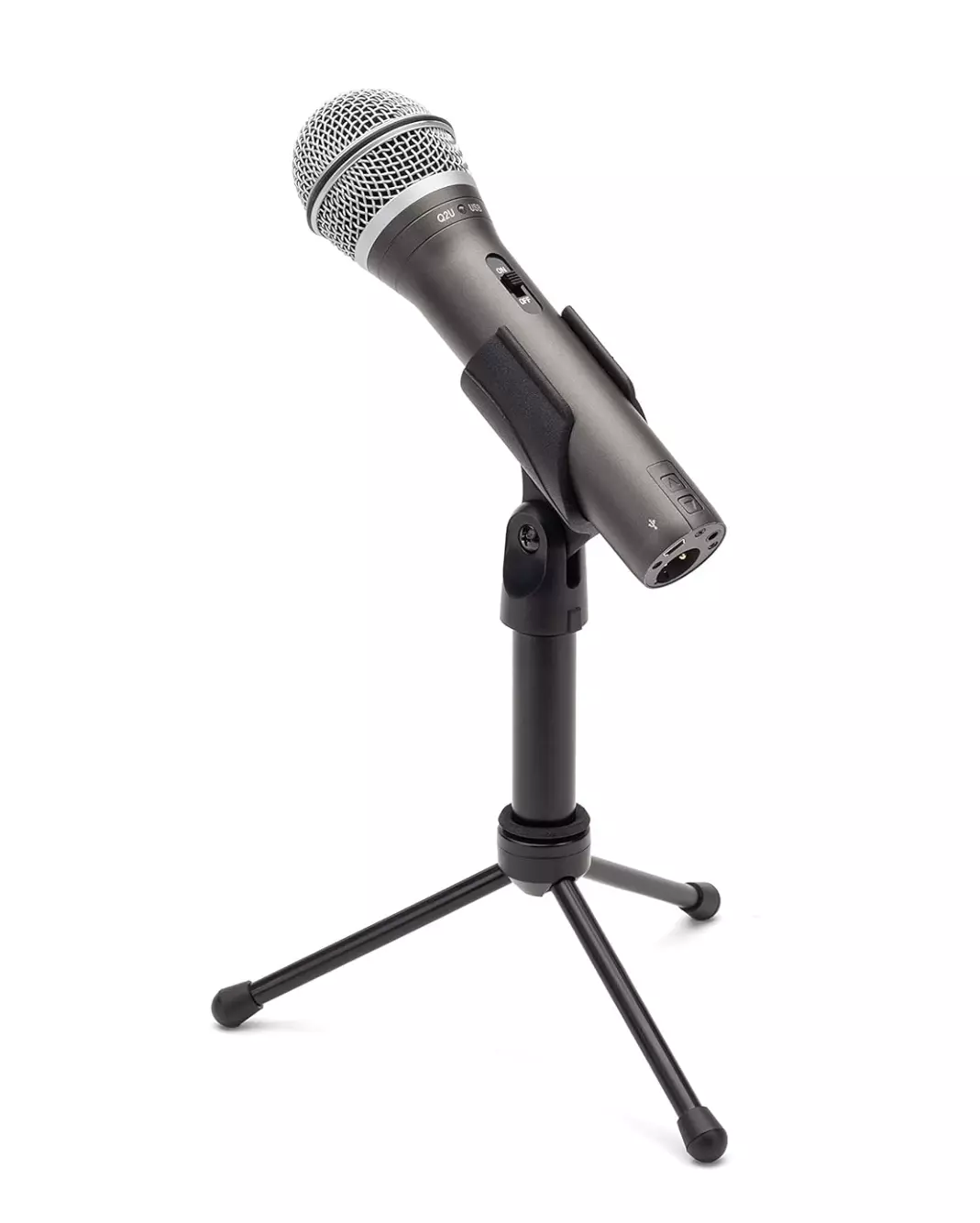
The Samson Q2U is a dynamic microphone that offers impressive audio quality for podcasting. It features both USB and XLR connections, allowing you to adapt to different recording setups. The cardioid polar pattern ensures that it captures your voice while minimizing unwanted background noise.
Built with podcasters in mind, the Q2U is sturdy and built to last. It can withstand the rigors of regular use, making it a reliable choice for long-term podcasting.
The microphone comes with essential accessories such as a desktop stand, a pop filter, and a headphone jack for monitoring. This all-in-one package makes it a convenient choice for beginners.
Pros and Cons
The Samson Q2U microphone is a versatile and popular microphone used by podcasters, musicians, and content creators. Like any product, it has its pros and cons:
Pros:
- Versatility: The Q2U is a dynamic microphone that can be used for a wide range of applications, including podcasting, streaming, recording vocals, and even instruments. This versatility makes it a great choice for beginners and those on a budget.
- USB and XLR Connectivity: One of the standout features of the Q2U is its dual connectivity options. It can be connected to a computer via USB for easy plug-and-play functionality, or it can be connected to an audio interface or mixer using XLR, providing higher audio quality and flexibility.
- Affordability: The Q2U offers a good balance between price and performance. It’s an affordable option for those looking for a quality microphone without breaking the bank.
- Solid Build Quality: It has a durable build with a sturdy metal construction that can withstand some rough handling, making it suitable for portable use.
- Built-in Headphone Jack: The Q2U features a built-in headphone jack for real-time monitoring of your audio, which can be a significant advantage for podcasters and streamers who need to hear themselves as they record.
Cons:
- Limited Audio Quality: While the Q2U offers decent audio quality for its price range, it may not match the audio quality of higher-end microphones. Users looking for top-tier audio quality may find it lacking.
- Cardioid Polar Pattern Only: The Q2U has a cardioid polar pattern, which means it primarily captures sound from the front while rejecting noise from the sides and rear. This can be limiting in some recording scenarios where you need a different polar pattern, such as omnidirectional or bidirectional.
- No Gain Control: Some users may find it inconvenient that the Q2U lacks an onboard gain control. You would need to adjust the input gain on your recording device or audio interface.
Pricing
The price of the Samson Q2U microphone is ₹9,450, if want to buy the Samson Q2U microphone Click the link below.
AKG Lyra
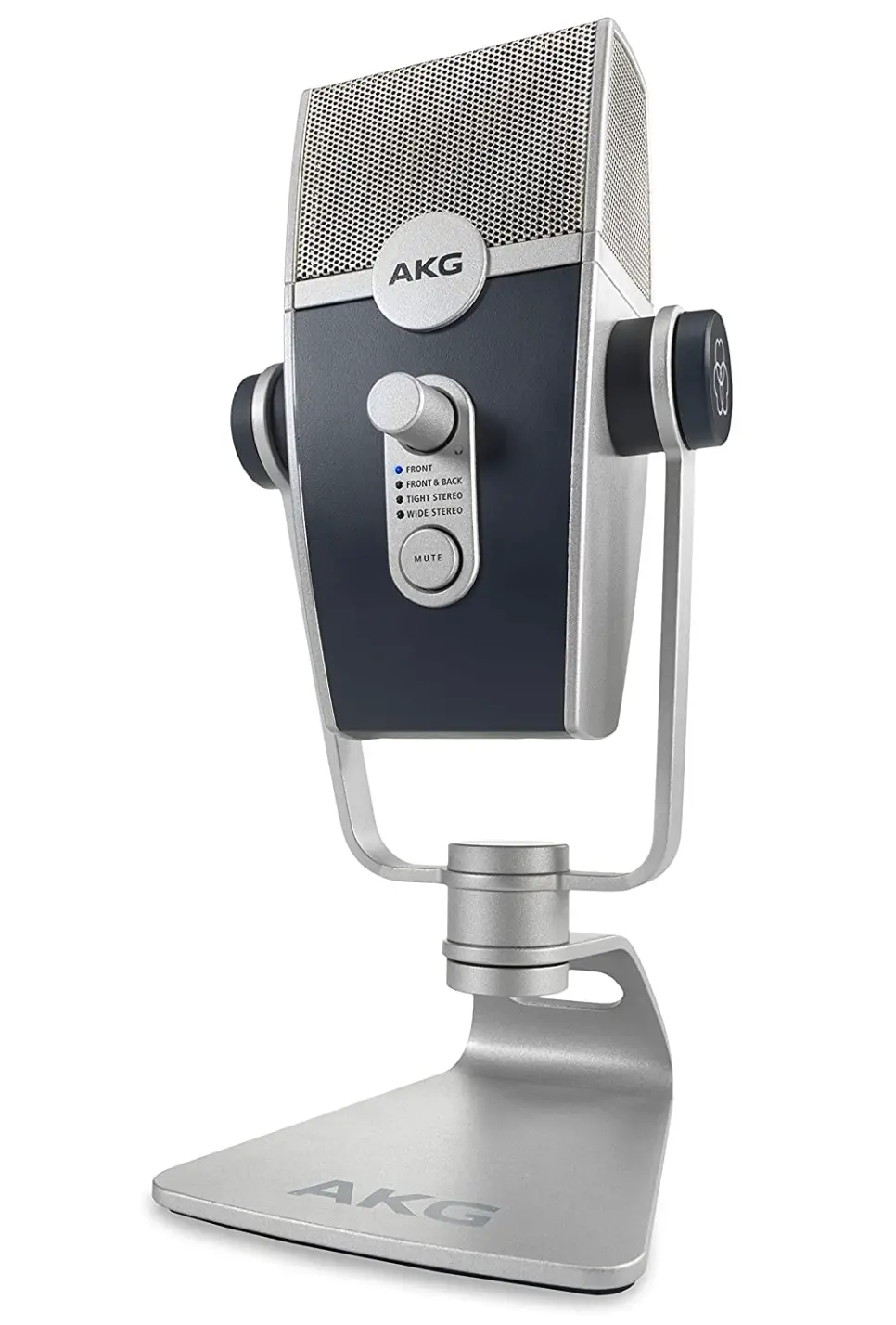
The AKG Lyra is a USB microphone that offers exceptional audio quality for podcasters. It features a 4-capsule array that provides a 360-degree pickup pattern, making it ideal for recording in a group setting. It supports 24-bit/192kHz audio resolution for crystal-clear sound.
The Lyra is plug-and-play, making it user-friendly for podcasters of all levels. It also has an intuitive headphone volume control and a microphone mute button for added convenience.
With its sleek and modern design, the AKG Lyra not only performs well but also looks great on your podcasting setup.
Pros and Cons
The AKG Lyra microphone is a popular choice for podcasters, streamers, musicians, and content creators. Like any product, it has its own set of pros and cons. Here are some of the pros and cons of the AKG Lyra microphone:
Pros:
- Versatility: The AKG Lyra is a versatile microphone that can be used for a wide range of applications, including podcasting, streaming, voiceovers, and recording instruments.
- Four Capture Modes: It offers four different capture modes (Front, Front and back, Tight Stereo, and Wide Stereo) that allow you to adapt to various recording scenarios and achieve different soundscapes.
- High-Quality Sound: The Lyra delivers high-quality audio with a 24-bit/192kHz resolution, making it suitable for professional-level recordings.
- Easy Setup: It’s a plug-and-play microphone, which means it’s easy to set up and use without the need for complex configurations or additional equipment.
- Integrated Headphone Output: The built-in headphone output allows for real-time monitoring of your audio, reducing latency and ensuring you capture the sound you want.
Cons:
- Price: Compared to some other USB microphones on the market, the AKG Lyra is relatively more expensive, which might be a drawback for budget-conscious users.
- Size and Weight: Some users may find the microphone a bit bulky and heavy, which could make it less portable than smaller microphones.
- No XLR Connectivity: The Lyra is a USB microphone, so it lacks XLR connectivity. This may be a limitation for those who prefer XLR microphones for specific applications or want to use them with audio interfaces.
Pricing
The price of the AKG Lyra microphone is ₹11,009, if want to buy the AKG Lyra microphone Click the link below.
Maono AU-PM422
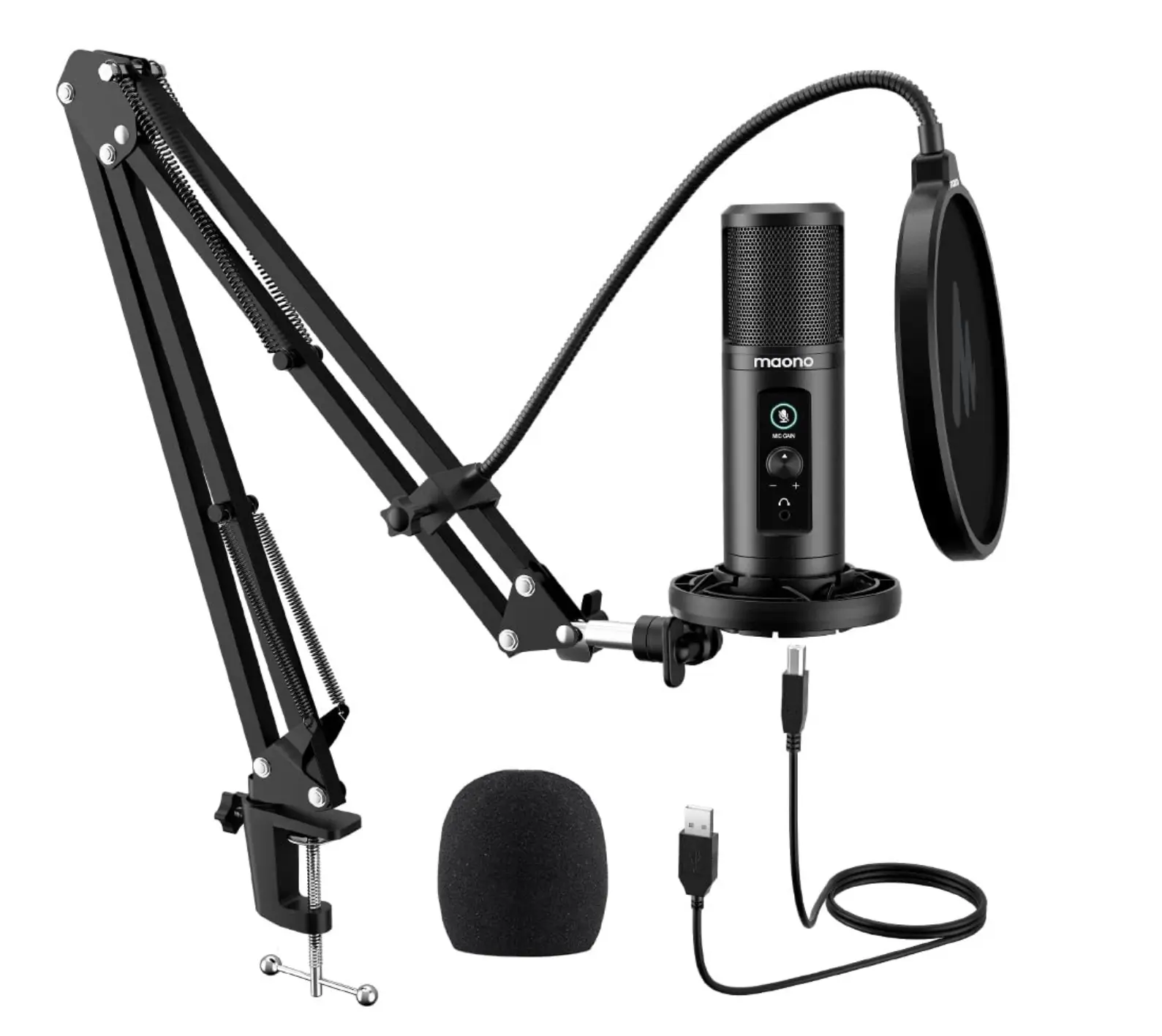
The Maono AU-PM422 is a cardioid microphone kit that includes a boom arm and a pop filter. It offers good sound quality and is suitable for various audio recording applications, including podcasting, streaming, and voiceovers. The cardioid pickup pattern helps reduce background noise, focusing on the sound source in front of the microphone.
The included boom arm and pop filter make it a convenient and versatile choice for content creators and musicians. Overall, it’s a solid choice for those looking for a budget-friendly microphone setup.
Pros and Cons
Pros:
- Complete Kit: The MAONO PM422 comes with a comprehensive package, including a boom arm and a pop filter, which makes it convenient and cost-effective for users who want to set up a professional recording space.
- Cardioid Pickup Pattern: The cardioid polar pattern is excellent for isolating sound sources directly in front of the microphone, reducing background noise, and improving audio clarity. This feature is especially useful for podcasting, streaming, and voiceover work.
- Sound Quality: Users often find that the PM422 offers good sound quality for its price range. It can capture clear and crisp audio, making it suitable for a variety of recording applications.
- Adjustable Boom Arm: The included boom arm is adjustable, allowing users to position the microphone at the optimal distance and angle for their needs. This flexibility is essential for achieving the best sound quality during recordings.
- Pop Filter: The included pop filter helps minimize plosive sounds (like “p” and “b” sounds) and reduces unwanted noise from breaths, enhancing the overall audio quality of recordings.
Cons:
- Build Quality: Some users have reported that the build quality of the MAONO PM422 may not be as durable as higher-end microphones. This could potentially lead to issues with longevity, especially with heavy use.
- Entry-Level Performance: While the PM422 provides good value for its price, it may not meet the expectations of professional audio engineers or musicians seeking studio-grade recording quality. It’s better suited for beginners or those on a budget.
- Limited Features: The microphone lacks advanced features and controls that can be found on more expensive models. Users looking for features like multiple pickup patterns, gain control, or additional sound processing options may need to invest in a more premium microphone.
Pricing
The price of the Maono AU-PM422 microphone is ₹5,790, if want to buy the Maono AU-PM422 microphone Click the link below.
FAQs
Do USB microphones provide good audio quality for podcasting?
Yes, USB microphones have come a long way in terms of audio quality. Many high-quality USB microphones are specifically designed for podcasting and offer crisp and clear sound recordings.
What factors should I consider when choosing a USB microphone for podcasting?
actors to consider include audio quality, polar pattern (cardioid, omnidirectional, etc.), ease of setup, compatibility with your recording software, build quality, and any additional features like headphone monitoring or gain control.
Should I choose a microphone with a specific polar pattern for podcasting?
The choice of polar pattern depends on your recording environment and how many people are speaking. For solo podcasters, a cardioid pattern is often recommended for reducing background noise. Omnidirectional patterns are suitable for group discussions or interviews.
What specific accessories to consider purchasing along with a USB microphone?
Depending on your setup, you may want to consider a pop filter, a shock mount, a boom arm or microphone stand, and headphones for monitoring. These accessories can enhance your recording quality and comfort.
Do USB microphones require any special drivers or software installation?
Most USB microphones are plug-and-play devices and do not require special drivers or software installations. They should work efficiently with your computer’s operating system.
What is Cardioid Microphone?
Cardioid Microphones pick up sounds from the front and sides but poorly from the rear. These microphones are best when only one person is talking and you don’t want to capture sound from the other side. HyperX Solocast one of these microphones.
Are condenser microphones good for podcasting?
Condenser microphones are sensitive and capture more details, and have the ability to record high frequencies making them preferred choice for podcasting and singing. However, it is recommended to record in a quiet environment.
Final Words
In the world of podcasting, audio quality reigns supreme. The best USB microphones for podcasting in 2025 offer exceptional performance, versatility, and affordability. Whether you’re just starting your podcasting journey or looking to upgrade your current setup, these microphones are sure to take your audio quality to the next level.
When it comes to choosing the right USB microphone for your podcast, consider your specific needs and budget. Each of the options mentioned in this guide has its strengths and is well-suited for different podcasting scenarios.
Investing in a high-quality USB microphone is an investment in the success of your podcast. Crystal-clear audio will engage your listeners and keep them coming back for more. So, equip yourself with the best tools available, and let your podcasting journey begin or continue to thrive in 2025.


